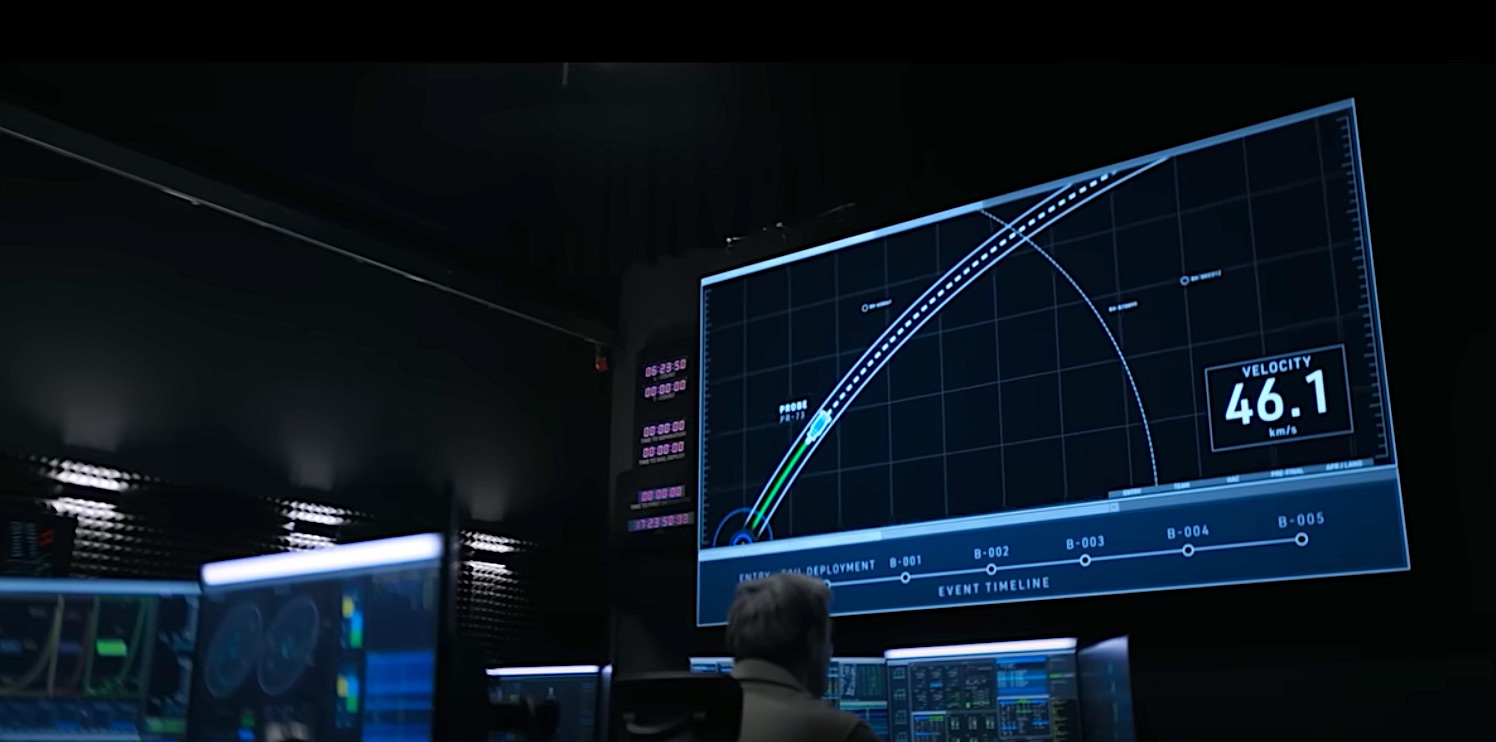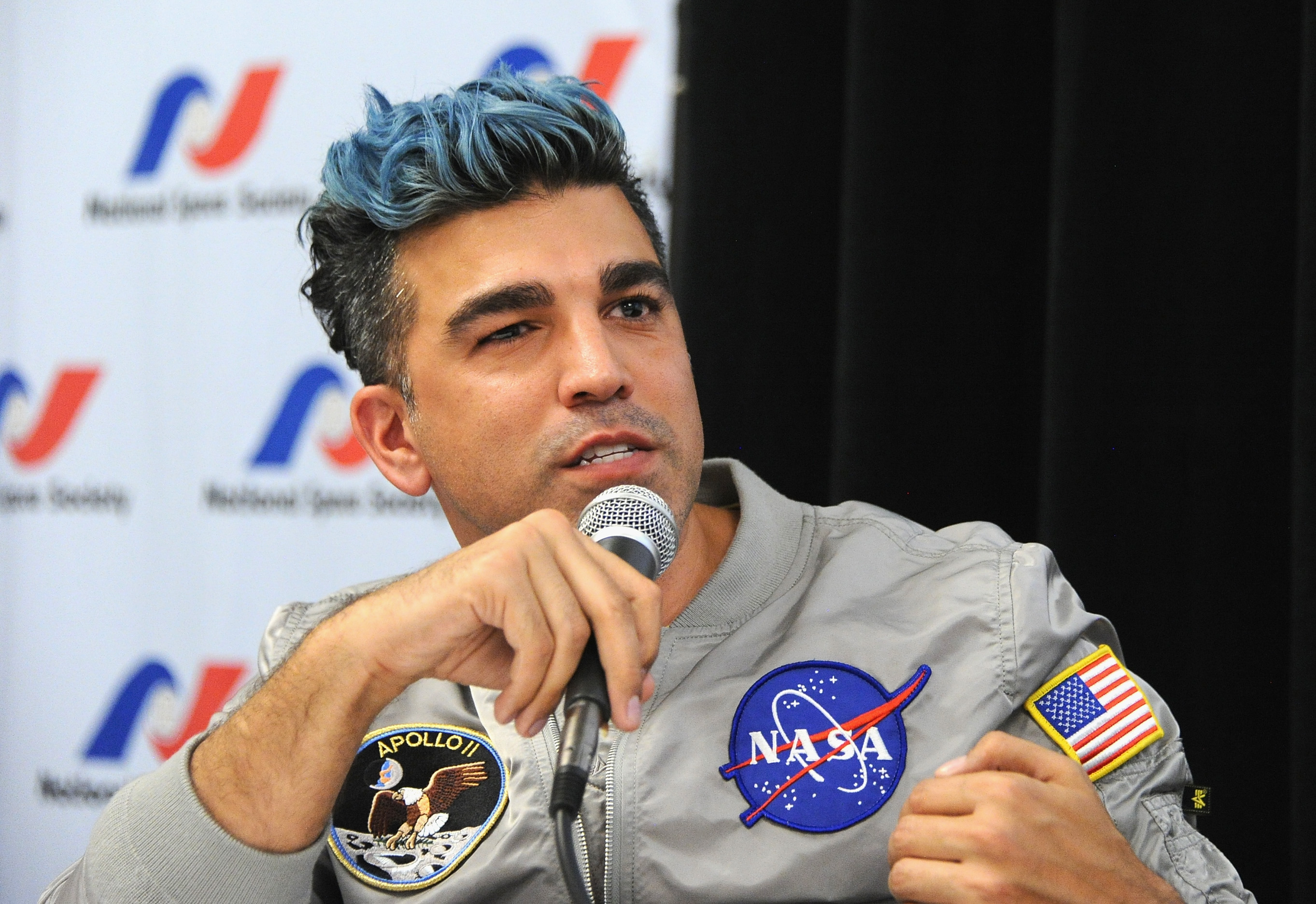NASA's 'Mohawk Guy' cameo in '3 Body Problem' explained (exclusive)

Helping to search for extraterrestrial life in all the right places, Jet Propulsion Laboratory (JPL) systems engineer Bobak Ferdowsi is a crowd favorite when it comes to building robotic spacecraft and solving complex aerospace problems all while sporting a super cool mohawk haircut.
Currently, Ferdowsi acts as the Fault Protection lead on the NISAR joint Earth observation mission with India and Europa Clipper's Mission Planner at NASA's JPL. Prior responsibilities have included Launch, Cruise, Approach Engineering Lead and Flight Director on Mars Science Laboratory Curiosity and Science Planner on the Cassini-Huygens mission to the Saturn system.
Ferdowsi, the "NASA Mohawk Guy," was an integral part of the Curiosity rover's Entry, Descent and Landing (EDL) team for the Jet Propulsion Laboratory when he achieved instant internet fame for his radical Captain America hairdo (accented red and blue with white stars on the shaved sides) during the live televised broadcast of Curiosity's Red Planet landing on Aug. 6, 2012.
Related: Netflix's '3 Body Problem' is an engrossing tale of a hostile alien invasion (review)
Ferdowsi was recently featured in a cameo for the eighth and final episode of Netflix's "3 Body Problem," the alien invasion miniseries from "Game of Thrones'"David Benioff and D.B. Weiss and "True Blood's" Alexander Woo. During the doomed Staircase Project sequence where an experimental probe carrying Will's brain was launched out to meet the San-Ti invasion fleet, Ferdowsi calmly portrayed a fictional mission director doing routine tracking call-outs.
We chatted with the popular rocket scientist to discuss his work as science advisor and actor on "3 Body Problem," taking cues from the episode's veteran director Jeremy Podeswa, and the feasibility of the show's nano-sail probe pushed out into deep space by a lineup of triggered nuclear bombs.
Space.com: How did you get involved with "3 Body Problem" and were you familiar with Cixin Liu's trilogy of novels that the series was adapted from?
Breaking space news, the latest updates on rocket launches, skywatching events and more!
Bobak Ferdowsi: D.B Weiss, one of the showrunners, was a mutual friend with somebody and a while back I met him and we chatted and hit in off. Over the pandemic we were catching up over drinks in his backyard and he mentioned he was working on "3 Body Problem" as a possible opportunity. He asked if I'd read it and whether I enjoyed it. Another friend gave me the books and I was thoroughly enthralled. Six months or a year later he told me they were going to do it and wanted to bring me onboard as a technical advisor. That's what I signed up for initially and we started there, working on those scenes, in particular for the mission director.
When they asked if I was interested in portraying the role myself I was a bit hesitant; I'm not an actor. But one of my life goals is to challenge myself and put myself in uncomfortable situations and see how I do. It's a supportive crew and I knew they weren't going to let me fail and do a terrible job.
Space.com: Where did you travel to for filming and how long did it take to shoot your scenes?
Ferdowsi: We filmed in summer of 2022 and of course it came out in March so almost two years apart. It was done outside of London at Shepperton Studios and it was a fun experience. A friend of mine is a composer and you'd go to the sound stage where they're recording stuff where they recorded the original "Star Trek" music. It's very practical it seems like there and less nostalgic at Shepperton than some of the Hollywood stages.
I love it because I love seeing how things get built, and that's why I'm an engineer. I think shows are no different at some level. This person has this job to make this part work and it's like a different breakdown. These are huge coordinated efforts and it's true for both industries.
I was on that set for two days. I'm delivering my lines and we shot most of my stuff in the second half of the second day pretty quickly. The thing that was new to me was doing the ADR work afterwards, redoing the lines for changes and updates based on how the editing looked.
Space.com: What direction did Jeremy Podeswa give you for your performance?
Ferdowsi: He mostly just tried to be very supportive. I was sweating profusely the moment he yelled, "Action!' He'd say, "That was great, can you give me a little bit more emotion?" Especially when things took a turn for the worse with the probe. For the most part, it was making sure my lines were clear and trying to get as authentic a performance out of me as possible. We had a bigger backstory about the mission and the lead-up to it. That element got condensed down to a few seconds on screen.
Space.com: How accurate is the science behind "3 Body Problem's" Staircase Project?
Ferdowsi: I don't think anybody has demonstrated that exact thing. We have elements that have certainly been proposed in the past for nuclear explosion driven missions, in particular the idea of dropping bombs behind a pusher plate and using the explosions to propel the probe forward. I think Jin makes a reference to that earlier in the season and one of the other scientists dismisses the idea by saying that you can’t carry enough mass from all the bombs.
For this we leveraged existing things like lightsail technology that uses the sun's photons. Or if you're looking at something like Project Starshot, the one that was proposed a few years back with the laser-accelerated lightsail. That's a similar concept. In this case we're using the electro-magnetic impulse from the bomb to accelerate the lightsail itself and push off of that.
The hard part there in realty would be, can you get the timing and position accuracy to that level right where you can control both the amount of acceleration and the direction of the incident angle of the sail to be correct? When you start talking about speeds of eighty kilometers-per-second, and it gets faster of course as you went along, how precisely could you time all these events and optimize your trajectory?
Space.com: What was the most fun aspect of being on set for this sci-fi production?
Ferdowsi: On a technical level, I think my favorite part was seeing how things work. Like many people, I wish that I could experience more than one career in my life. Getting a glimpse of that was awesome. The other part was that it's such a great group of people and that's a testament to the showrunners for creating that environment. Everyone was so friendly and nice and supportive.
We walked away friends and I keep in touch with a lot of the folks. It made me think about how I'd create these same healthy positive environments where everybody feels like they’re on the same team when I work my day job too. That was one of the big highlights for me.
"3 Body Problem" is currently streaming all episodes exclusively on Netflix.

Jeff Spry is an award-winning screenwriter and veteran freelance journalist covering TV, movies, video games, books, and comics. His work has appeared at SYFY Wire, Inverse, Collider, Bleeding Cool and elsewhere. Jeff lives in beautiful Bend, Oregon amid the ponderosa pines, classic muscle cars, a crypt of collector horror comics, and two loyal English Setters.




